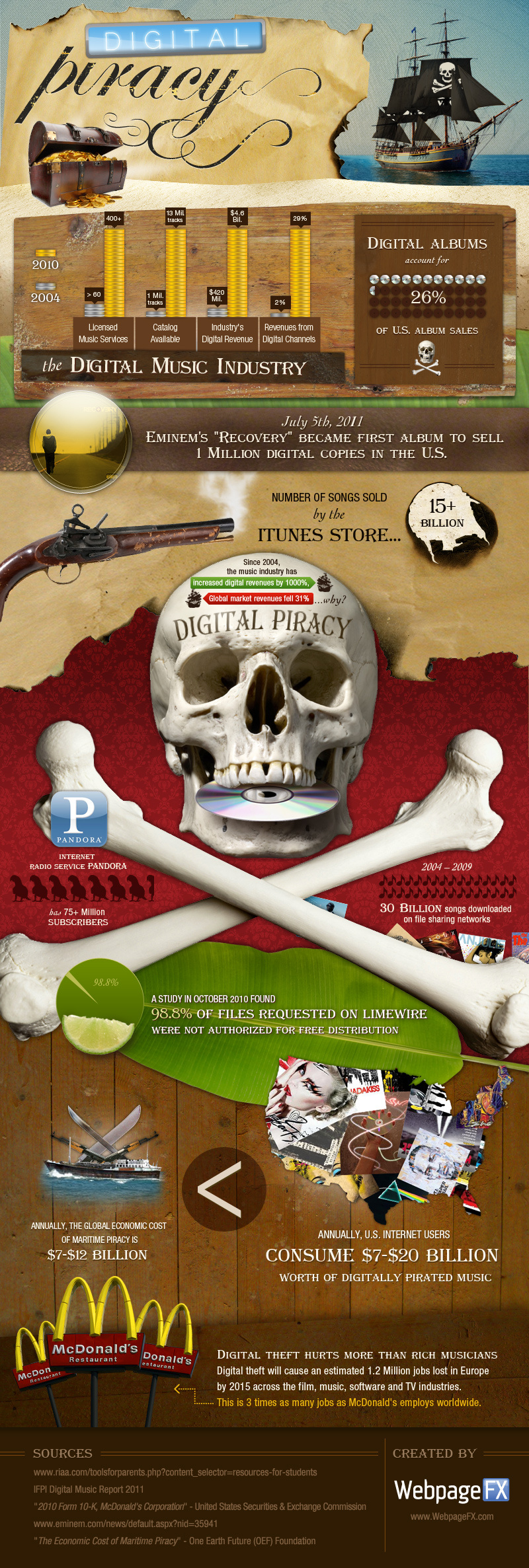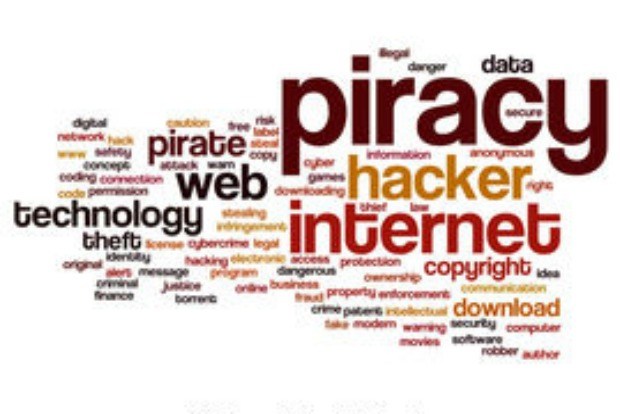Piracy has been a contentious issue throughout history, evolving with the advancement of technology and the proliferation of media. In the realm of popular culture, piracy manifests itself in various forms, primarily through the illegal distribution and reproduction of music, movies, television shows, and software. This article explores the multifaceted impact of piracy on media in English, examining its origins, cultural significance, economic implications, and the responses from various stakeholders.
The Origins of Piracy in Popular Culture
Piracy can be traced back to the days of the high seas, where privateers and buccaneers plundered ships for treasure. However, the modern conception of piracy, particularly in relation to media, began to emerge in the late 20th century with the advent of digital technology. Key developments include:
- The Internet Revolution: The rise of the internet in the 1990s made it easier for individuals to share files and access media without paying for it. Napster, a pioneering file-sharing service, exemplified this shift by allowing users to share music files freely.
- Digital Media Formats: The transition from physical to digital formats for music, movies, and software facilitated unauthorized copying and distribution. MP3s and digital video files became the new currency of piracy.
- Globalization: The internet transcended geographical boundaries, allowing piracy to flourish in regions where copyright laws were weak or poorly enforced.
The Cultural Significance of Piracy

Piracy is not merely a criminal act; it has cultural implications that resonate with audiences around the world. It raises questions about ownership, access, and the democratization of culture.
Access to Media

For many, piracy provides access to media that may otherwise be unavailable due to economic constraints or geographical restrictions. In countries with limited access to entertainment, piracy becomes a means of cultural participation. For instance:
- Developing Countries: In regions where purchasing power is low, piracy allows individuals to experience global media phenomena, from Hollywood blockbusters to international music hits.
- Censorship Resistance: In authoritarian regimes, pirated content can serve as a form of resistance against censorship, providing citizens with alternative viewpoints and cultural expressions.
Cultural Commentary and Identity
Piracy often serves as a form of cultural commentary, challenging traditional notions of ownership and artistic production. The act of pirating can be seen as a rejection of corporate control over art and entertainment, leading to debates about:
- Intellectual Property Rights: Many argue that strict copyright laws stifle creativity, while others believe they are essential for protecting artists’ rights.
- Consumer Ethics: The moral implications of piracy are hotly debated, with some viewing it as a form of theft and others as a legitimate response to exploitative pricing structures.
The Economic Impact of Piracy
The economic consequences of piracy are complex and multifaceted, affecting various stakeholders within the media industry.
Financial Losses
Industry estimates suggest that piracy results in significant financial losses. According to a study by the Institute for Policy Innovation, the U.S. economy loses approximately $29.2 billion annually due to online piracy. Key points include:
- Music Industry: The Recording Industry Association of America (RIAA) estimates that piracy has cost the music industry billions in lost sales, leading to job losses and reduced revenue for artists.
- Film Industry: The Motion Picture Association of America (MPAA) reports that piracy costs the film industry over $20 billion annually, threatening the production of new films and the livelihood of filmmakers.
- Software Industry: The Business Software Alliance (BSA) claims that unlicensed software usage leads to losses of around $46 billion globally each year.
Market Adaptation

In response to the threat of piracy, many media industries have adapted their business models to accommodate changing consumer behaviors. This has included:
- Subscription Services: Platforms like Netflix, Spotify, and Apple Music have emerged, providing affordable and convenient access to a vast array of content, reducing the allure of piracy.
- Content Bundling: Media companies are increasingly bundling content to offer more value, making legal options more attractive to consumers.
- Global Releases: Simultaneous global releases of films and music help combat piracy by reducing the window of opportunity for illegal distribution.
Case Studies: Piracy in Action
Several notable cases illustrate the impact of piracy on popular culture and media:
The Rise and Fall of Napster
Napster revolutionized music sharing in the late 1990s, allowing users to share MP3 files globally. While it gained immense popularity, it also faced legal challenges from artists and record labels. The eventual shutdown of Napster highlighted the struggle between innovation and copyright enforcement, reflecting the complexities surrounding piracy.
The Game of Thrones Phenomenon
The HBO series “Game of Thrones” became one of the most pirated shows in history, with millions of illegal downloads each episode. The show’s popularity prompted discussions about how to balance accessibility and profitability in the age of streaming. HBO responded by investing heavily in marketing and offering legal alternatives, demonstrating the need for media companies to adapt to piracy’s realities.
Legislative and Technological Responses
Governments and industries have implemented various measures to combat piracy, ranging from legislation to technological solutions.
Legislation
Several countries have enacted laws designed to curb piracy, including:
- The Digital Millennium Copyright Act (DMCA): Enacted in the U.S. in 1998, the DMCA aims to protect copyrighted material online while also providing safe harbor provisions for internet service providers.
- The Copyright Directive: The European Union’s directive seeks to strengthen copyright protections and enhance enforcement against piracy across member states.
Technological Measures
Technological advancements have also played a role in combating piracy, including:
- Digital Rights Management (DRM): Many media companies use DRM technology to restrict unauthorized copying and sharing of their content.
- Content Identification Systems: Platforms like YouTube employ algorithms to identify and remove pirated content, allowing rights holders to protect their intellectual property.
Conclusion: The Future of Piracy in Popular Culture

Piracy in popular culture remains a complex and evolving issue, shaped by technological advancements, cultural shifts, and economic implications. While it presents challenges for the media industry, it also prompts critical discussions about access, ownership, and the future of content consumption.
As media companies continue to adapt to the realities of piracy, it is crucial for stakeholders to find a balance between protecting intellectual property and ensuring that consumers have access to the content they desire. The lessons learned from the past will undoubtedly influence the future of media, shaping how we interact with culture in an increasingly digital world.
In summary, piracy is more than just an act of theft; it is a reflection of broader societal values, economic realities, and the evolving landscape of media consumption. Understanding its impact allows us to navigate the complexities of popular culture in the digital age.

/cdn.vox-cdn.com/uploads/chorus_image/image/25151711/456596449.0.jpg)
